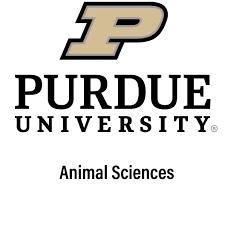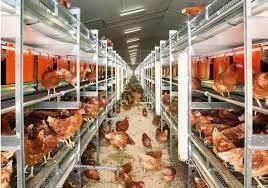 Dr. Marisa Erasmus of Purdue University Department of Animal Sciences recently concluded an evaluation of alternate floor systems in aviaries. The project was funded as #712 by the USPOULTRY Foundation.
Dr. Marisa Erasmus of Purdue University Department of Animal Sciences recently concluded an evaluation of alternate floor systems in aviaries. The project was funded as #712 by the USPOULTRY Foundation.
A more detailed comment on the trial will be provided after results have been published. The summary circulated by USPOULTRY indicated:
- There are differences between brown and white-feathered strains with respect to flooring systems. This may be due to hen weight.
- The response of flocks to either litter or AstroTurf™ flooring in aisles relates to age and presumably system of rearing.
- AstroTurf™ floors appeared to affect feathering. It is, however, difficult to distinguish between the effects of the floor material and the design and configuration of aviaries since there may be interactions. In any event, any modification of the environment that could enhance retention of feathers would be beneficial in terms of feed conversion efficiency and ultimately, cost.
- AstroTurf™ flooring was associated with a lower prevalence of floor eggs, which is intuitive. The artificial substrate was associated with a higher level of dirty eggs. This is, in all probability, due to the fact that more eggs are laid in nest areas and on the floors of modules, resulting in fecal contamination, especially with defective roll-out.
- The use of AstroTurf™ reduced ammonia levels compared to shavings although the level of ammonia is a function of ventilation rate.
 It is intuitive that hens prefer shavings to AstroTurf™ as they can dust bathe. It must be remembered that the objective of converting from cages to cage-free systems was to allow hens to display natural behaviors. Substituting AstroTurf™ for shavings would appear to be counter to the demands of welfare advocates.
It is intuitive that hens prefer shavings to AstroTurf™ as they can dust bathe. It must be remembered that the objective of converting from cages to cage-free systems was to allow hens to display natural behaviors. Substituting AstroTurf™ for shavings would appear to be counter to the demands of welfare advocates.
A major deficiency of Trial 2 was that hens were held to 36 weeks. Obviously, a lot can happen between 36 weeks and 80-week depletion that could influence the selection of either AstroTurf™ or shavings. The observations concerning keel damage may be invalid since manual palpation does not detect the range of injuries that occur in aviary systems. Experimental evidence suggests that radiography is the standard by which evaluation should be performed. The confounding effects of aviary design, including the number of tiers and rearing, is probably more important to integrity of the sternum than the floor substrate.
Evaluating management procedures and installations in aviaries is a necessary requirement to enhance efficiency and financial return. The trial supported by USPOULTRY represents an advance in understanding of aspects of aviary design and management.
The report does not take into consideration the initial capital investment in AstroTurf™ compared to litter nor does the scale of the experiment allow for a realistic appraisal of any return on investment through increased revenue from saleable eggs.